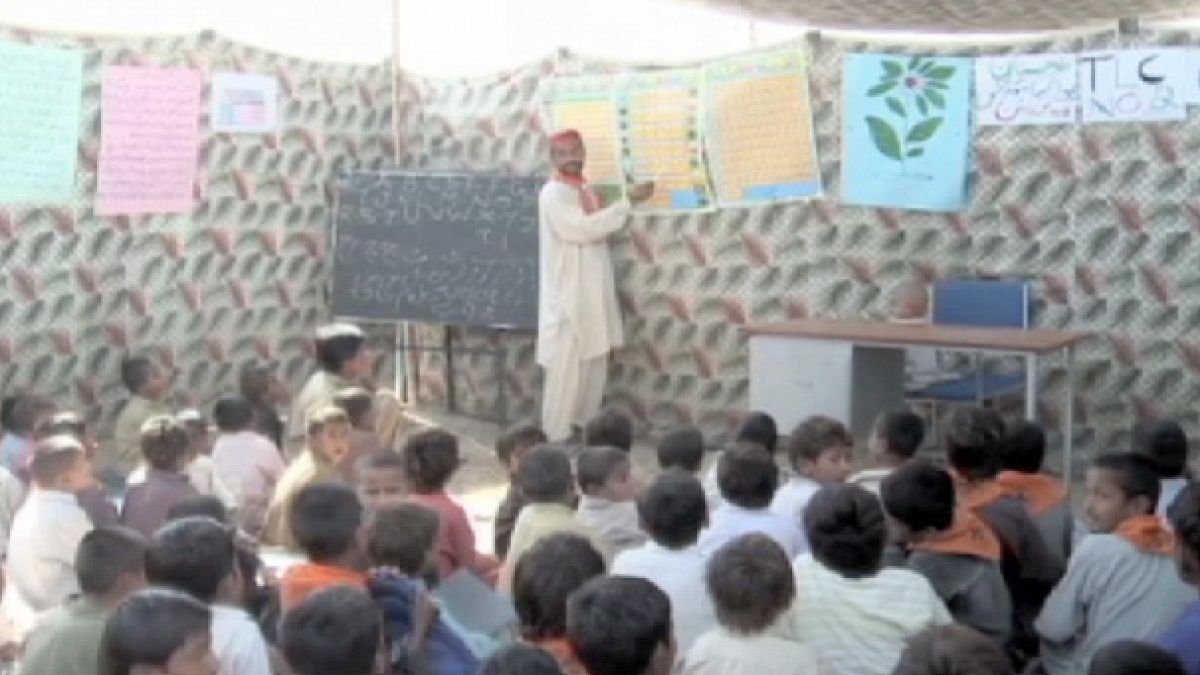Recovering from the trauma of a natural disaster is not only about rebuilding homes and schools, but also rebuilding broken lives and healing trauma. So-called “Emergency Education” can be one of the most effective means to help children who survived a natural disaster return to normality.
In Haiti, one year on, most of the schools are still emerging from the rubble of the devastating earthquake. More than 200,000 people were killed. Renane counts herself lucky to be alive. She lost her leg, but she did not lose hope. And she credits the support of her family and NGO Handicap International.
Last January’s earthquake in Haiti left nearly one and a half million homeless. Around 60 percent of the schools were also destroyed, but reconstruction efforts meant that almost all children in Haiti were able to go back to school last September – even though many classes were taught under canvas. However the main task facing teachers was reassuring deeply traumatised children.
There is a high risk of absenteeism in Haiti. But some children are overcoming extraordinary problems. Nine-year-old Renane lost her leg as a result of the earthquake but with the help of her family and the charity Handicap International, Renane has picked up the threads of her normal life alongside her twin sister.
The twins go to school from 6.30am to 1.00pm. Only 15 percent of schools are state run in Haiti; all the rest are private and therefore expensive. Child education benefits are not enough to cover the cost of fees, books and transportation.
After the earthquake Renane was reluctant to go to school. Her headmistress, Marie-Anne Simon, said: “One day she came, but the next day she said she didn’t want to come back. I asked why and she said ‘The others wear skirts, but I wear trousers.’ It was true – so I asked all the other parents to dress their daughters in trousers too.”
After the floods in Pakistan, temporary learning centres were set up. At one in Jaafarabad, over 1,300 children who survived the devastating floods are now benefiting from education. For some of the youngsters it is their first ever chance to learn.
Eight-year-old Reshma is one of the pupils and it is her first taste of formal education. Nadia is one of the teachers at the camp. Her own plans for further studies were disrupted by the floods. She told us: “I have 103 students, studying Urdu, English and maths. They are eager to learn. Seeing other children studying attracts other children into education for the first time in their lives.”
In the on-going aftermath of the 2004 tsunami a teacher in Thailand has encouraged her pupils to express their memories of the disaster through art.
It is one way of helping her young pupils come to terms with the tragedy in 2004. She is also facing worries about the reliability of the coastal tsunami early warning system.
The school where she works, on the island of Phuket in southern Thailand, was largely unscathed by the tsunami. And most of the pupils there were very young when disaster struck six years ago, so the art teacher has asked them to draw pictures of their memories. Two children from the school died in the tsunami and many others lost a family member or friend.
Rebuilding hotels on this beach is illegal because of the tsunami risk, but despite the “Tsunami Hazard Zone” signs, the school has not been moved from the most dangerous location in the village.
